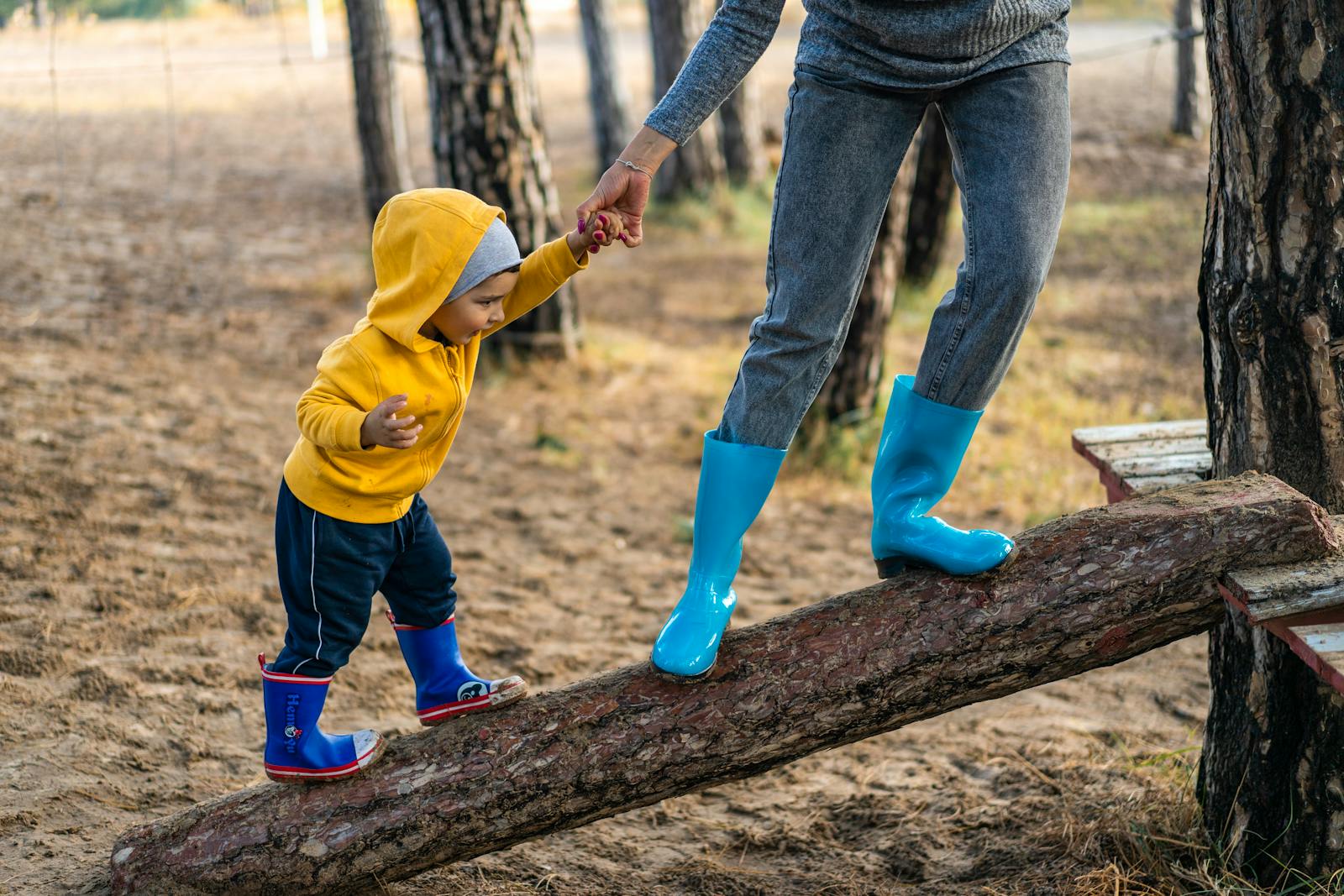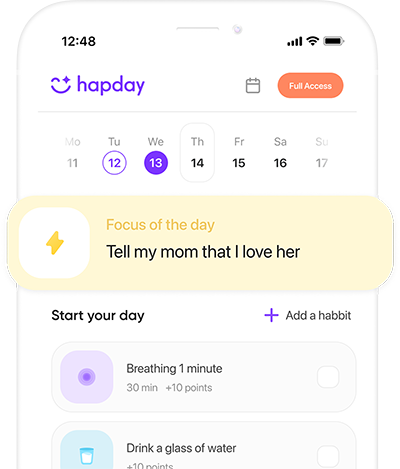In the meandering journey of life—ups, downs, loop-de-loops—overcoming childhood trauma is like trying to find your way through a maze, with cultivating self-love as your trusty compass. Particularly for Gen Z and Millennial women diving into the deep end of science-backed self-help, understanding how past experiences shape us is crucial. Imagine unraveling the layers of old memories and realizing they’ve been steering your ship. This article (honest, bear with me) delves into the tangled web of childhood trauma, offering grounded, research-driven strategies to nurture self-love, which acts like a balm for those old wounds.
Table of Contents
- Understanding Childhood Trauma
- The Science of Self-Love
- Identifying Barriers to Self-Love
- Strategies for Cultivating Self-Love
- The Role of Self-Love in Healing
- Conclusion
Understanding Childhood Trauma
What’s childhood trauma anyway, eh? It’s when life decides to throw curveballs during our formative years that leave scars—not the kind you show off with pride, mind you. The National Child Traumatic Stress Network points out that by 16, more than two-thirds of kiddos have reported at least one traumatic event. That’s staggering, right? When you really think about it, these aren’t just events—they’re experiences that run the gamut from abuse (of various horrific flavors) to neglect or even witnessing violence up close, like a bad movie you can’t escape. That same trauma later gallivants around our psyche, increasing the risk of depression, anxiety, PTSD—at least, that’s what a JAMA Psychiatry study mentioned. Early trauma also messes with how our brains develop, stress responses go haywire, and emotional regulation can feel like trying to tame a whirlwind.
The Science of Self-Love
Now, onto self-love. Some people think it’s all sunshine and rainbows, but it’s more like training a garden to flourish, thorny bits and all. Essential in overcoming childhood trauma, self-love revolves around self-compassion and acceptance. It’s a brave act—like seeing your own reflection and not flinching. Research out of Psychological Science suggests that self-compassion helps shield us from trauma’s long shadow, bolstering resilience and kicking emotional recovery into gear.
Dr. Kristin Neff, champion of self-compassion, stresses that self-love means being kind to ourselves, noticing shared human struggles, and practicing mindfulness instead of beating ourselves up. It’s a bit like giving yourself a hug—a genuine, warm, caring embrace that facilitates healing and growth.
Identifying Barriers to Self-Love
Here’s the rub: For those with childhood trauma history, self-love doesn’t come easy. Like, if you’ve been marinating in negativity and internalized shame, it can be tough to break free. Barriers pile up like:
- Low Self-Esteem: Trauma undermines self-worth, leaving you feeling sorta meh—been there.
- Negative Self-Talk: Carrying echoes of the past, we can become our own harshest critics.
- Emotional Numbing: A defense mechanism, this disconnection makes self-love seem out of reach.
- Trust Issues: After betrayal, trusting anyone, including yourself, feels akin to climbing Everest.
Recognizing these barriers is step numero uno in knocking ’em down and striving towards self-acceptance.
Strategies for Cultivating Self-Love
1. Practice Mindfulness and Self-Compassion
Mindfulness, whether it’s a few minutes meditating or striking a yoga pose, helps ground us in the moment. Staying present fosters self-compassion, and believe it or not, Journal of Traumatic Stress says it can even reduce PTSD symptoms.
Actionable Steps:
- Carve out 5–10 minutes each day for mindfulness meditation.
- Try guided meditations focused on self-compassion; feel your emotions without judging them.
2. Engage in Affirmative Rituals
Affirmations. Some say they’re cheesy, but they work—flipping the script on negative self-talk. A study from Social Cognitive and Affective Neuroscience found these statements even spark neural changes linked to self-worth.
Actionable Steps:
- Pen three positive affirmations every morning.
- Recite them aloud when doubt or anxiety crop up.
3. Establish Boundaries
Boundaries, my friend, are no joke. They’re outlines that protect emotional wholesomeness and say “I respect myself.” Trauma often blurs these lines.
Actionable Steps:
- Pinpoint where boundaries are MIA (think work, relationships).
- Assertively say “no” where your well-being feels threatened—ditch the guilt.
4. Seek Professional Support
Therapy can be, and often is, a game-changer in confronting childhood trauma. Modalities like Cognitive Behavioral Therapy (CBT), Eye Movement Desensitization and Reprocessing (EMDR) are lauded for trauma recovery.
Actionable Steps:
- Find a therapist specializing in trauma.
- Explore individual or group therapy options.
5. Engage in Creative Expression
Artistic endeavors—whether through painting, writing, or jamming to music—function as emotional outlets. Alright, it sounds offbeat, but the American Journal of Public Health indicates they’re substantial mood enhancers.
Actionable Steps:
- Commit time to a creative pursuit that intrigues you.
- Use journaling to delve into emotions and chart progress.
6. Cultivate a Supportive Network
Surround yourself with people who lift you up—these folk amplify self-love and steer you through rough waters. It’s true! Social support plays defense against trauma’s adverse effects.
Actionable Steps:
- Engage with friends or support groups that validate your journey.
- Distance yourself from energy drainers or toxic relationships.
The Role of Self-Love in Healing
Embracing self-love isn’t like hitting a destination—it’s more of a perpetual voyage, especially when tackling childhood trauma. As you nurture this relationship with yourself, breaking the shackles of self-criticism and shame becomes possible, fostering healing and toughness.
Research in the Journal of Happiness Studies aligns self-love with increased life satisfaction and emotional buoyancy, underscoring its pivotal role in recovery. Prioritizing self-love can empower trauma survivors to regain control and craft a life in sync with their dreams.
Conclusion
Overcoming childhood trauma and nurturing self-love isn’t just another tick-box exercise—it’s an enduring, soul-stirring voyage. By confronting the lingering shadows from earlier days and infusing the now with self-compassion, individuals pave a path to healing and growth. The strategies shared here are stepping stones in nurturing self-love and resilience, encouraging Gen Z and Millennial women to recognize their innate worth and lead a life true to themselves.
Feel ready to embark on this journey of self-love and healing? Check out Hapday to find tools and resources supporting your mental well-being.


This article is such a breath of fresh air! I love how it emphasizes the importance of self-compassion in healing from childhood trauma. It’s so true that self-love is not just a feel-good concept but a crucial step towards recovery. The actionable steps provided are super helpful; I can’t wait to try the mindfulness meditation tips!
Absolutely! Mindfulness has been a game changer for me. Just taking a few minutes each day has helped me reconnect with my emotions and foster that self-compassion we all need.
While I appreciate the effort behind this article, I can’t help but feel that some aspects of self-love sound overly simplistic. Can just practicing affirmations really make a difference? It seems like there’s more to healing than just positive thinking.
I found the section on identifying barriers to self-love particularly relatable. It’s eye-opening to realize how past experiences can shape our current mindset and behaviors. The idea of emotional numbing really resonated with me, as I’ve struggled with that for years.
What an inspiring read! The strategies for cultivating self-love are spot-on, especially establishing boundaries! Setting boundaries has been one of the hardest things for me, but I’m learning it’s essential for my mental health.
@PositivePetunia, yes! Boundaries can be tough at first, but they really do protect your peace. It’s liberating once you start asserting your needs!
@PositivePetunia Totally agree! Learning to say no without guilt has been life-changing.
‘Engage in Creative Expression’—what a fantastic point! I’ve always turned to art when I’m feeling low, and it really helps process emotions I can’t articulate otherwise. Such an important tool in healing!
Sure, let’s all just hug ourselves and everything will be fine, right? But seriously, it’s easy to say ‘love yourself,’ but much harder to practice it when you’re dealing with deep-rooted trauma.
I get where you’re coming from, Sammy! It’s not easy at all; that’s why these strategies are so important—they’re about taking small steps toward real change.
Such an informative article! I’m particularly interested in the science behind self-love and how it can actually boost resilience after trauma. It makes me feel hopeful about my own journey!
Exactly Jenna! Understanding the science gives us a solid foundation—it’s not just fluff; it’s backed by research!
I love that this piece recognizes how childhood trauma can affect adulthood—it’s like carrying around baggage we didn’t even know we had until we start unpacking it.
Well said! Unpacking those layers is tough work but so necessary for healing.
I found this article incredibly enlightening! The way it connects childhood trauma with self-love really resonates with me. It’s refreshing to see a piece that not only acknowledges the struggles many face but also provides actionable strategies to cultivate a healthier mindset. I’m particularly intrigued by the mindfulness practices suggested. This is just what I needed to kickstart my healing journey.
While I appreciate the intention behind this article, it feels overly simplistic and a bit cliché. The idea of ‘self-love’ has become almost commercialized, and I’m not sure if affirmations and mindfulness alone can heal deep-rooted trauma. Life isn’t just about positive thinking; it’s messy, and these strategies might not work for everyone. We need more nuanced discussions on mental health.
This post brings up some vital points regarding childhood trauma and self-love. It seems critical to understand how our past experiences shape our present selves, particularly for younger generations like Gen Z and Millennials. The statistics about childhood trauma are alarming, but knowing that we can take steps toward healing is empowering. I’m excited to try out some of the mindfulness techniques mentioned.
Absolutely! It’s essential that we equip ourselves with knowledge about these issues and actively seek healing methods like those in the article. Self-compassion should be at the forefront of recovery efforts.
‘Just practice self-love,’ they say, as if it’s that easy! There are layers of complexity when dealing with childhood trauma that this article glosses over. Sure, boundaries are important, but what if you don’t even know where to start? Not everyone has access to therapy or supportive networks, so this piece feels a bit disconnected from reality for many people.
. You raise an important point about accessibility in mental health resources—it’s not as straightforward for everyone.
. While I agree there are barriers, even small steps towards self-love can lead to bigger changes over time.
‘Engaging in creative expression’ sounds like something out of a new-age handbook! While it may work for some people, others might find themselves confused or frustrated instead of enlightened by artsy endeavors. Let’s be real: sometimes journaling just leads to more swirling thoughts rather than clarity!
If only overcoming childhood trauma was as easy as reciting affirmations while sipping tea! Perhaps we should all join a yoga class and chant our way into self-love nirvana too! I appreciate the effort here, but come on—real healing takes time and isn’t solved by cute phrases alone.
True! But sometimes humor helps lighten heavy topics like these—still gotta put in work though!
This article resonates on so many levels! It beautifully articulates the struggle between acknowledging past traumas while learning to embrace oneself fully in today’s world—a task that seems daunting yet necessary for growth! The strategies listed offer such practical guidance; I plan on sharing this with friends who could benefit from reading it too.
I love your enthusiasm Hannah! This kind of support is exactly what we need more of!
The idea behind this article is well-intentioned but feels overly optimistic without addressing systemic issues affecting mental health today—like economic hardship or social isolation which complicate self-care practices significantly.
Good point Patty; systemic factors definitely shape our experiences.
Yes indeed; while personal effort matters greatly—the environment can hinder progress too.